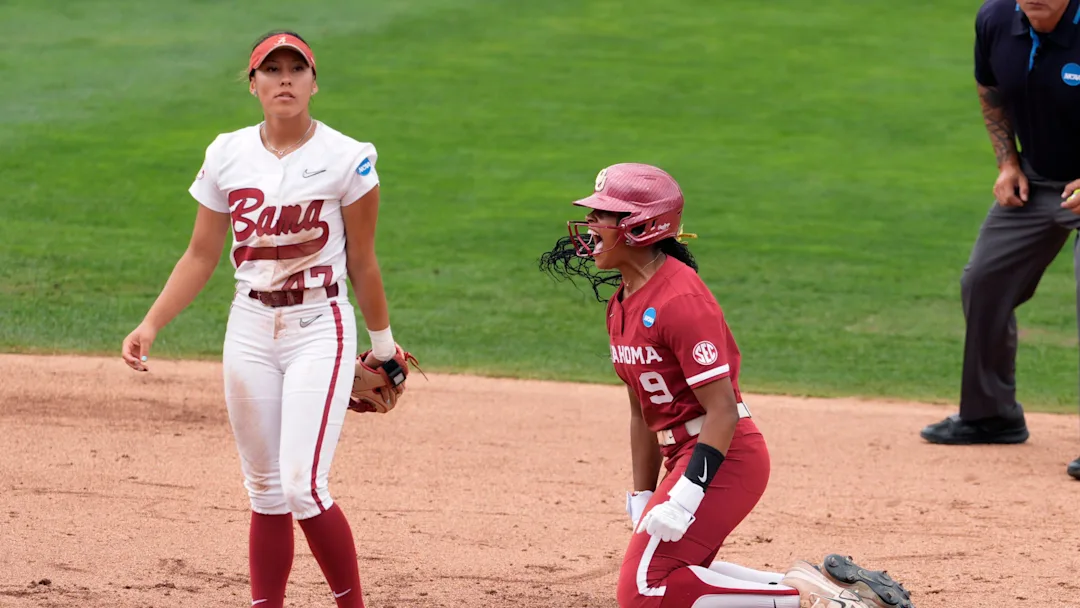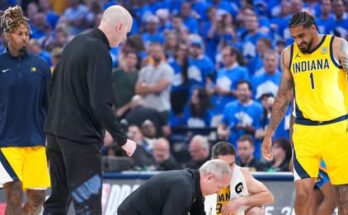Alabama softball lost to Oklahoma by a blowout, eliminating them from the Super Bowl.
The Alabama Crimson Tide softball team saw its promising 2025 season come to a crashing halt in the Norman Super Regional, suffering a devastating 13–2 defeat at the hands of the Oklahoma Sooners in Game 2. This loss, following a tight 3–0 defeat in Game 1, not only ended Alabama’s season but also showcased the overwhelming prowess of the nation’s top team.
Though Alabama entered the postseason with grit, talent, and a fiercely loyal fanbase behind them, the matchup against Oklahoma revealed critical shortcomings—particularly in depth, consistency, and experience on the biggest stage.
Heading into the Super Regional, Alabama knew the mountain they had to climb. Oklahoma has long been the gold standard in college softball, with multiple national championships in recent years and a stacked lineup loaded with power hitters and elite pitching. Alabama, though ranked lower, came in with confidence following strong regional performances and anchored by key contributors like Kali Heivilin, Bailey Giles, and pitchers Jocelyn Briski and Catelyn Riley.
The Tide hoped to catch lightning in a bottle and steal a game in Norman to push the series to a decisive Game 3. Unfortunately, that spark never ignited.
The opening game of the series was far from a blowout, and for much of the early innings, it looked like Alabama might pull off an upset. The Tide got runners on base but failed to deliver timely hits, stranding runners in scoring position inning after inning. Oklahoma’s Sam Landry, a dominant force all season, kept Alabama’s bats guessing with a blend of riseballs and changeups.
Jocelyn Briski pitched well in the early going but was punished for minor mistakes. A solo home run and an RBI single in the middle innings gave Oklahoma a lead they would never relinquish. Alabama finished the game with multiple base runners left on base and no runs to show for it.
Final score: Oklahoma 3, Alabama 0.
The story of Game 1 was one of opportunity denied—not by lack of effort, but by Oklahoma’s ability to shut the door in key moments.
If Game 1 was a heartbreaker, Game 2 was a heart-stopper—for all the wrong reasons. Alabama needed to start strong to avoid elimination, but everything unraveled in the second and third innings. Starting pitcher Catelyn Riley, usually dependable, struggled to locate her pitches. Oklahoma’s hitters pounced, putting up a five-spot before Alabama could even catch its breath.
Reliever Jocelyn Briski came in hoping to stop the bleeding, but Oklahoma smelled blood in the water. Briski allowed four runs without recording an out, and the Sooners exploded for a double-digit lead before the fourth inning.
Alabama managed two solo home runs—one by star infielder Kali Heivilin, the other by Bailey Giles—but those sparks of offense were isolated and ultimately inconsequential.
Final score: Oklahoma 13, Alabama 2 (run-rule after 5 innings).
The rout sent a clear message: Oklahoma was on a different tier, and Alabama was simply overmatched in every phase of the game.
- Batting Average: Alabama hit .231 over the two games, compared to Oklahoma’s .413.
- Home Runs: Oklahoma hit 5 in the series; Alabama hit 2.
- Runners Left on Base (Game 1): Alabama left 9.
- Errors: Alabama committed 1, Oklahoma 0—a testament to the Sooners’ discipline.
Standout performances were limited for Alabama, but Heivilin’s consistency (3-for-4 with a double, home run, two walks, and an RBI) showed why she’s one of the most respected hitters in the SEC.
Despite the bitter ending, Alabama’s 2025 campaign included numerous highs. The team posted a strong regular-season SEC record, ranked among the nation’s top 15 throughout much of the season, and battled through a competitive regional to reach the Super Regional stage.
Several players made significant strides:
- Kali Heivilin emerged as a top-tier hitter and defensive anchor.
- Jocelyn Briski posted a sub-2.50 ERA across the season.
- Bailey Giles, a rising power bat, gave the lineup much-needed punch.
Their success was not a fluke—but their ceiling was capped by inconsistencies in pitching depth, situational hitting, and execution under pressure.
Several factors contributed to Alabama’s elimination:
1. Pitching Depth
Alabama leaned heavily on Riley and Briski throughout the year, and by the time they faced the offensive juggernaut that is Oklahoma, both pitchers showed signs of fatigue. Unlike Oklahoma’s deep rotation, Alabama didn’t have a reliable third arm to turn to when things went south.
2. Offensive Timeliness
Hits came, but they didn’t come when they were needed. The Tide stranded runners in almost every inning of Game 1. A well-timed single or sac fly could have shifted momentum.
3. Mental and Emotional Pressure
This was a young team with a mix of veterans and underclassmen. The pressure of playing on the road in Norman, in front of one of the most passionate fanbases in softball, clearly had an effect. Oklahoma, by contrast, thrived under the spotlight.
4. Oklahoma’s Dominance
Let’s not understate this: Alabama wasn’t just beaten—they were outclassed by a team that’s likely headed for another national title. Oklahoma’s speed, power, and poise were unmatched.
This loss, while painful, doesn’t signal the end of the road—it may mark the beginning of something greater. Alabama has several reasons to be optimistic:
- Returning Stars: Heivilin and Giles are expected back, giving the lineup a powerful core.
- Freshman Development: A number of first-year players showed flashes and will be more experienced next year.
- Recruiting Boost: Alabama continues to recruit at a high level and has several elite high schoolers committed for 2026.
Coach Patrick Murphy, now in his 26th season, remains a pillar of stability and excellence. Under his guidance, the Tide have made frequent trips to the Women’s College World Series, and this team has the pieces to return there with a few tweaks.
The 2025 Norman Super Regional was a showcase of what it takes to win at the highest level in college softball. For Alabama, it was a humbling yet instructive moment. They were reminded that raw talent alone isn’t enough—it’s the ability to execute, to stay poised, and to adapt under fire that separates champions from contenders.
Oklahoma gave Alabama a blueprint—not just of how to win, but how to dominate. Now the Crimson Tide must decide how they’ll respond.



